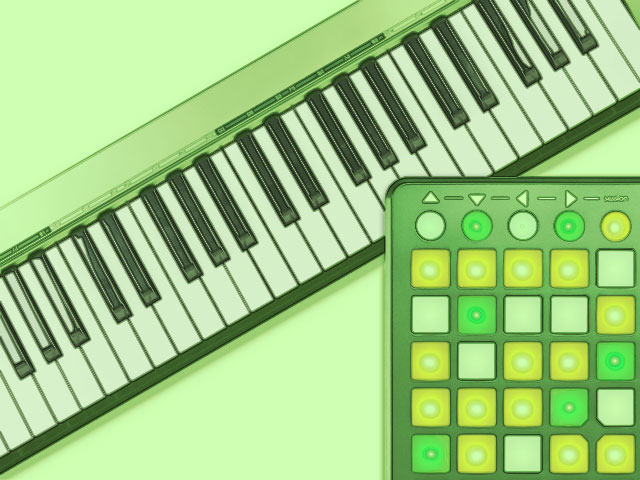- Published Jul 5, 2013 in Gear Garage
Curt Magura of IMMusic gives an overview of what MIDI is and the power it can bring to your music.
You just brought your shiny new keyboard home. As you are plugging in the power cord, you notice two funny looking connectors on the back labeled MIDI In and MIDI Out. Just what am I going to do with those you wonder?
Welcome to the world of MIDI! First, the acronym stands for Musical Instrument Digital Interface.
MIDI dates back to the early 80's and is still widely used in the music industry today. It allows you to connect various types of equipment together. MIDI capable keyboards, computers, and drum machines are some of the most popular. The world of MIDI is full of terms and acronyms. What follows is a high-level overview of a few of them to help get you started.
Depending on the device involved, you may have two, three, or more MIDI ports on your device.
- MIDI In - to send MIDI data INBOUND to the device.
- MIDI Out - to send MIDI data OUTBOUND from the device.
- MIDI Thru - May not be on all devices, but will allow you to connect an additional MIDI device and share the inbound MIDI data with that additional device. The data is routed directly from the MIDI In port on the first device and out of the thru port and is not modified in any way.
Some higher end devices will have multiple MIDI In and / or MIDI Out ports.
For example, let's take two keyboards. Connect MIDI Out on keyboard number one to MIDI In on keyboard number 2. Keyboard number one sends information about what note you played and how long you held the note. Keyboard number two receives that information and will play the same note for the same length of time. In this case, you could have a flute sound coming from the first keyboard, and an oboe sound coming from the second keyboard.
Another common example might be:
- MIDI Out of your keyboard to the MIDI In on your computer.
- MIDI Out of your computer to the MIDI In on your keyboard.
This configuration will allow you to record MIDI information using a sequencer program on your computer. Once you have the data in the form of MIDI events in your computer, many possibilities open up. You can edit the data, print it, and have the ability to play back your performance by sending the MIDI data back to the keyboard.
Both are very simple examples, but start to give you an idea of some of the many things possible when you start connecting your MIDI capable devices together.
MIDI does not contain any audio information; it does contain data referred to as MIDI events.
- NOTE ON Event - Pretty much, what is says. It contains the note number, what MIDI channel to use, and the velocity, or how hard or fast, the note was played.
- NOTE OFF Event - Now that the note is "on" eventually, we need to turn it off. Similar to the note on event, the note off event contains velocity information and which note to turn off.
- PROGRAM CHANGE Event - If you play any type of electric keyboard, you more than likely have pushed a button or turned a knob to change from a piano sound to a flute or some other sound. When you do, you are performing a program change event. In MIDI terms, how you tell the other device what sound or patch you want loaded.
- CONTROLLER Event - There are 128 different MIDI controllers. They "control" things like volume and effects. We are not going to list them all here but let's look at a few of the important ones.
- Controller 0 - Bank Selection
- Controller 7 - Main Volume
- Controller 10 - Pan - Similar to the balance control on your stereo
- Controller 11 - Expression
- Controller 64 - Damper or Sustain Pedal
- MIDI Channel 2 - Bass track
- MIDI Channel 3 - Left hand /Accompaniment track
- MIDI Channel 4 - Right hand / Melody track
- MIDI Channel 10 - Drum track
The remaining channels are used for additional parts depending on the complexity of the arrangement.
We barely scratched the surface when it comes to MIDI implementations. Join us in our next article as we take a closer look at General MIDI, General MIDI2, and the General MIDI Patch Map and percussion note assignments. If you have two or more pieces of gear with MIDI ports on them, we encourage you to get them connected and start exploring all the exiting possibilities it can bring to your music!

